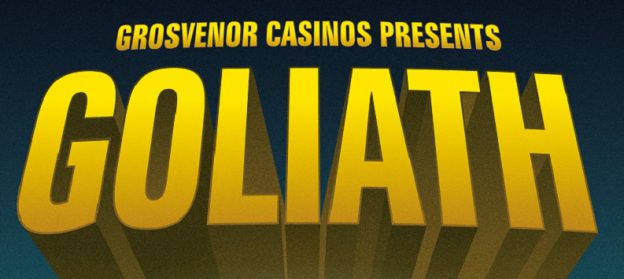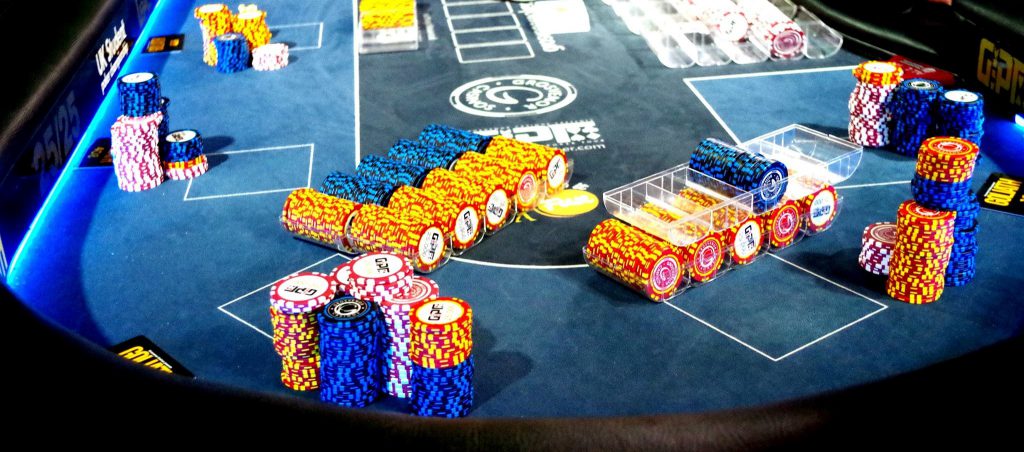They say what happens in Vegas, stays in Vegas, but this summer I managed to bring back a teeny bit of sun tan, along with a few dollars and many great memories. It was a top trip all round, with cashes galore by the Grosvenor poker qualifiers, including a big final table appearance by Cody Wagner who took 4th in a World Series event winning $30,000.
It’s hard to be hyperbolic about Vegas. Everything is supersized, from the hotels and casino/resort complexes, to the food portion sizes, the cars, and of course the poker events. The sheer scale of the World Series of Poker (WSOP) still excites me year on year, and the game just seems to keep growing, with several of this summer’s tournaments drawing 5000+ entries.
It might seem anticlimactic to return to England from the blazing sun and the thrill of the Series, but there’s plenty of fun just around the corner. Now it’s time for our taste of Vegas in the UK.
This coming week could be called the low-stakes version of the WSOP—a colossal event, but at a fraction of the cost. It’s the GOLIATH and it’s our chance to turn £125 into £100,000.
The Goliath has attracted, year on year: 1765, 1954, 2568, 3394, 4210, 5232, 6385 entries—and looks set to beat its own record once again.
Why Big Fields are Cool
The obvious. You can turn a small buy-in into big prize money. That’s why we play tournaments, right? Goliath takes it to the next level: you can win EIGHT-HUNDRED (800) times your buy-in.
Great value. 7000 poker players can’t all be pros, can they? And in principle, the larger the field, the greater your potential skill edge.
Diversity. The full gamut of players is represented, from beginners, pub league players, first-time live punters, up to the country’s best. Everyone is welcome, and the spectrum means you will have to beat good and bad players alike.
The buzz. The card room has a real festival atmosphere, and away from the tournament tables there’s entertainment, a food hall and lively cash games.
The Goliath has no direct comparison. This is the biggest tourney outside of Las Vegas (where the WSOP attracts fields of thousands, crammed inside a conference centre the size of an aircraft hangar). But I don’t know of any low buy-in equivalent, and the Goliath is a logistical masterwork.
So to business—how to win? Here’s what NOT to do:
Pitfalls
Don’t be hasty: the tournament lasts three full days of playing time. It has a better structure than almost any game of this buy-in bracket. Playing over-aggressively can sometimes gain chips in the short term, but for most people is not a sustainable strategy. ‘Grinding’—surviving, waiting for good spots—is hugely underrated.
Don’t panic. If you lose a big part of your stack, try to move on. Plenty of time to rebuild! A key poker skill is tilt control, and this is especially invaluable in long tournaments, where it’s almost inevitable you will have multiple setbacks along the way.
Don’t over-adjust. You don’t have to pull some crazy special moves out of the bag just because of the bumper field. Often it’s the solid, patient players that frequently go deep in tourneys like this. Just play your usual game, don’t force anything, and see what cards and situations come your way.
Don’t look at the average chip count. You will seldom hear a good pro say “I need a double-up” in seriousness. It’s normal to get short-stacked; in fact it’s almost unavoidable over three days of play. Additionally, there’s a gap between perception and reality. I’ve sometimes heard people say they are “on fumes” when they have 17 big blinds! Maybe it’s because they have dropped back to near their starting stack, or perhaps they’re at a table where everybody else is chipped up. *This doesn’t matter.*
How to Win
Play your hand and your present situation. Simply take the game one hand at a time. Fixating on the chip average, or something annoying that happened five minutes ago, is a distraction. Poker can actually be quite a simple game, and many hands play themselves. If in doubt FOLD—you may just find aces the next hand.
Play a short stack correctly. This is arguably the most crucial tournament skill, and some of my biggest scores have come from tourneys where I was grinding 15-25 bigs for much of the game. Simply make decisions based on the effective number of BBs (whichever is shorter, out of your stack and your opponent’s) and forget outdated advice on playing a short stack. You don’t have to get it in with any mediocre hand just because you have 9 or 10 bigs. Ace-rag does not become a profitable shove from under-the-gun just because it’s the best hand you’ve seen for two hours. Before you push a middling hand, make sure you have fold equity (don’t push K-10 over an UTG raise if you only have 8 bigs! I nickname this classic misstep the ‘jamikaze’). Always consider folding pre-flop.
Play a deep stack correctly. You begin with a LOT of chips, and many players at the Goliath will be inexperienced at playing so deep. Remember you don’t normally want to be stacking off with one-pair in the early levels. Don’t overplay top-pair or a marginal overpair. There is an old saying “big hand / big pot. Small hand / small pot.” Unimproved aces are not a huge hand when you’re 250 big blinds deep, unless you’ve identified a fishy opponent who will pay off with many worse hands.
Finally, HAVE FUN. It’s a game, and you’ll play better if you are relaxed. Enjoy the atmosphere and good luck!



Leave a Reply
You must be logged in to post a comment.